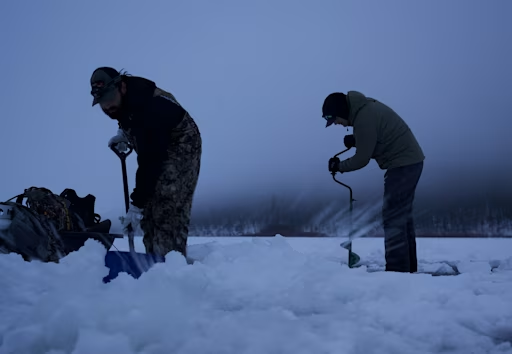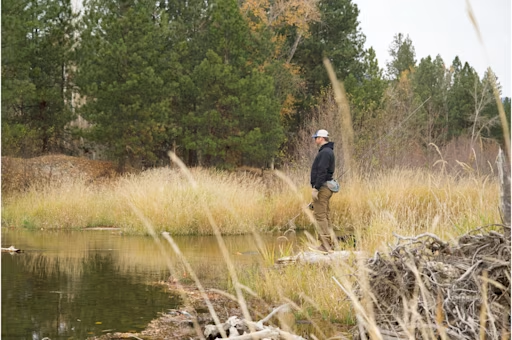Tips for fishing with a kayak
Curious about kayak fishing and considering investing in a kayak? Read tips about finding the right kayak and making your fishing trip successful.
Share this article

Why do you need a kayak when fishing?

A kayak is hands down my favorite and most recommended fishing tool. It’s an absolute game changer. Any boat will give you access to almost 100% of the waters that you choose to fish but a kayak brings with it advantages that are undeniable. In terms of portability, affordability, and fishability, they are unmatched. These will give you access to every fishing spot you could ever want to get to. You will be able to hit coves and shallows that motorboats can’t navigate, travel creeks and rivers hitting every elusive fishing hole on the way down, as well as removing yourself from trees or branches that can make casting impossible on shore. Let’s go over some of the basics you’ll need to know when shopping for your first kayak.
What size kayak is best for fishing?

he toughest or most taxing part of utilizing any boat to fish with is getting it to the lake, into the water and then getting it home. Kayaks range from 20 pounds and $100 all the way to hundreds of pounds for thousands of dollars. Your first fishing kayak should be one that allows you to store, carry, and fish with it simply. My first kayak was around 40 pounds, could be loaded on top of almost any vehicle, and then upon arrival was simple to throw on my shoulder and walk to wherever I needed to take it. It’s lightweight made it easy to paddle, highly maneuverable in more turbulent waters on river trips, and simple to store and maintain. These are things you’ll need to take into account when weighing your options regarding the style of kayak you’d like for yourself. If the task of getting a bigger kayak to the lake deters you from fishing it may not be your best choice
Choosing a comfortable kayak
An overlooked and critically important part of your kayak is going to be the seat and the posture it holds you in. Cheaper kayaks may offer little to no seat, while more advanced sit on top kayaks may have adjustable padded seats with full back rests. If you’re putting the effort in to spend a day on the water in a boat, realize that storage, price, weight, and all the bells and whistles go out the window if after an hour you’re so uncomfortable that you need to get out. You’re going to be sitting in this vessel for extended periods of time, putting in a lot of physical work to get to your fishing spot, and actively casting and retrieving in the sitting position. If you’re able, spend the time and do the research to find a boat that doesn't sacrifice comfort. Keep in mind there may be times you’ll have a life preserver on as well, which will change your posture and position in the boat.
Storing your kayak
Storage is vital. You need to have room for your tackle, your rods, your lunch, drinks, sun block, you need somewhere for your paddle while you're fishing and this all needs to be somewhat accessible to you while on the water. If you risk flipping your boat trying to grab a sandwich you might have the wrong yak. A kayak that lacks compartments will force you to keep any gear between your legs which is not necessarily a problem, but it WILL get what. Paddling naturally brings water into the boat, so having a couple spots or pockets that are elevated or behind your knees is a huge plus. Watertight storage compartments are pretty typical but just make sure you can reach and access them safely while in the water. Dry bags and containers can also be used to keep your gear dry, while small key ring floats can ensure that your keys, wallet, or anything else important to you remains accessible after you accidentally flip.
Kayak fishing logistics
Finally, a couple odds and ends to keep in mind while you’re trying to decide on a boat. You’ll absolutely want somewhere on the boat to be able to secure an anchor. The lake is always windier and the wind makes kayak fishing extremely frustrating. Where are you storing your rods and your paddle? Forward facing rod holders, typically attached to side rails, will help keep your rod at hand and will avoid trees or overhanging branches. Anything that a hook can get stuck on (paracord, or other types of rope or string that may be used, mesh, cloth, etc) will get a hook stuck on it. If your hook is stuck on the front of your boat on a carry handle it will be VERY difficult for you to reach while in the water. Some kayaks are designed for you to stand up on and fish from. These are more expensive but very versatile.
Post written by David Schaeffer
For personal help and tailored advice find me on my subreddit, Instagram, and the Fishbrain App.
David manages the subreddit Fishing for Beginners
Find him on Instagram
Fishbrain user ID: ShiftyUsmc

Download the Fishbrain app and access the best fishing spots in your area
Related blog posts
Discover the best spots, techniques, and gear for successful fishing in urban areas and city waters on Fishbrain.

Master the hardwater season with advanced ice fishing tips . Learn how to find fish faster, refine your search and adjust presentations to catch more fish all winter long.

Your guide to Victoria’s best fish to catch in rivers, lakes, and coastal waters. Learn prime species, fishing tips, and key regulations




